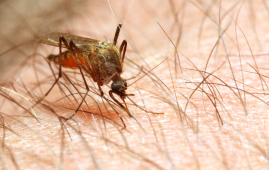

Instant noodle danger: According to research, children’s scald injuries are frequently caused by a scorching cup of instant noodles.
A recent study that looked at kid admissions at the University of Chicago Medicine for burn injuries brought on by hot liquids discovered that between 2010 and 2020, over one-third, were brought on by instant noodles.
“Anecdotally, it felt like every other child we were consulted on for a burn was injured by instant noodles, so we wanted to dive into the data to see what the trend really was,” said senior author Dr. Sebastian Vrouwe, assistant professor of surgery at UChicago Medicine.
“Our hope is to develop the groundwork for future burn prevention programming, as essentially all childhood burns are in some way preventable,” he said in a system news release.
After reviewing 790 cases, researchers from the UChicago Medical Burn Center attributed 31% of them to instant noodles. Also, the study team discovered that compared to their peers, Black children and children who resided in locations with lower Childhood Opportunity Index (COI) scores were more likely to sustain these scald burns. The COI, in broad terms, is a gauge of neighborhood social, economic, educational, and health factors.
Risk increased when people were left alone. For over 40% of instant noodle burns, children were alone.
Although the study only looked at data from the UChicago Medical Burn Center, the researchers believe the figures point to a wider, national problem.
Instant noodles are a convenient and affordable dish. The noodles are typically provided in a plastic or disposable cup, which is then filled with boiling water. The burns that occur are nevertheless hazardous and require hospitalization while being a little less severe than some other types of scalds. The study found that surgery, including skin grafting, is occasionally necessary.
Each year, food and beverages inflict scald burns on about 100,000 children in the US.
“Direct caregiver supervision is one important step in burn prevention,” Vrouwe said. “The amount of heat contained in these noodles can easily cause second and third-degree burns in anyone, but young children are particularly vulnerable due to their relatively smaller bodies and thinner skin.”
The burn team has observed common behavior patterns in these scald incidents, such as inadvertent spills when removing containers from the microwave and spills while eating due to the narrow bases of instant noodle cups.
“We were surprised [by] the sheer magnitude of the problem, which confirmed that focused effort and awareness on these types of burns could have a significant impact in the communities that our burn center serves,” Vrouwe said.
He hopes to raise awareness and encourage more primary care providers to discuss burn prevention in the home. Simple measures can help keep kids safe.
“Lowering hot water heaters to 120 degrees Fahrenheit is one established way to prevent burns in the home,” Vrouwe said. “If these reminders come from a trusted source, such as a child’s pediatrician, we feel this might change behaviors over time and reduce the probability of sustaining burns.”
An adult should always remove noodles from the microwave and keep them out of children’s reach until sufficiently cooled, Vrouwe said. To further reduce risk, eat at a table rather than on a lap, he added.
Study findings were recently published in Burns, the journal of the International Society for Burn Injuries.
more recommended stories
 E-Cigarette Use and Heart Attack Risk in Former Smokers
E-Cigarette Use and Heart Attack Risk in Former SmokersKey Takeaways for Clinicians and Nurses.
 Ultramarathon Physiology: What HCPs Should Know?
Ultramarathon Physiology: What HCPs Should Know?Ultramarathon Metabolism: What Happens to the.
 High-Intensity Training and Oxidative Stress Insights
High-Intensity Training and Oxidative Stress InsightsNew Evidence Linking High-Intensity Training and.
 Sterilized Fermented Beverage for Obesity: New Evidence
Sterilized Fermented Beverage for Obesity: New EvidenceEarly Insights Into a Sterilized Fermented.
 Cardiovascular Risk and Sudden Cardiac Death in Diabetes
Cardiovascular Risk and Sudden Cardiac Death in DiabetesRising Sudden Cardiac Death (SCD) Risk.
 Perinatal Mental Health Challenges Highlighted in New Study
Perinatal Mental Health Challenges Highlighted in New StudyMental Health Challenges in New Parents:.
 Walking Speed Before Hip Replacement Predicts Recovery
Walking Speed Before Hip Replacement Predicts RecoveryNew Evidence Points to a Simple,.
 How Soybean Oil Impacts Weight Gain and Metabolism
How Soybean Oil Impacts Weight Gain and MetabolismWhy Soybean Oil May Affect Metabolism.
 New Malaria Prevention Insights From African Biostatistics
New Malaria Prevention Insights From African BiostatisticsHow New Data Is Reframing Malaria.
 World Summit Outlines Core Principles for Healthy Longevity
World Summit Outlines Core Principles for Healthy LongevityWhy Healthy Longevity Demands a New.

Leave a Comment